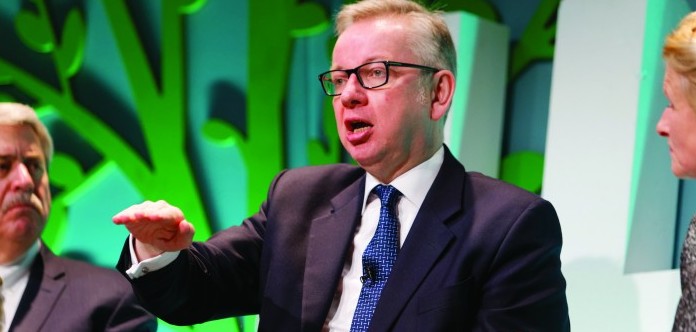Defra Secretary Michael Gove has announced the development of a new livestock traceability service, set to come into operation next year.
The Livestock Information Service will identify and track animal movements, initially cattle, sheep, pigs and goats, via electronic IDs, replacing the AML2 system.
The service has been developed over the past year by Defra in consultation with industry stakeholders, including NPA chief executive Zoe Davies, through a partnership called the Traceability Design User Group (TDUG). It will help create and develop the new service.
Mr Gove said the new system would give farmers and processors accurate information about animals and their movements. Operational from 2019, it will provide the foundation for some of the best farm to fork traceability in the world when the UK leaves the EU, demonstrating our credentials as a world leader in food production, he added.
The system also means that the industry and government will be better-placed to respond in the event of a disease outbreak.
Mr Gove said: “This service will be instrumental in improving traceability and providing guarantees to consumers about the origin of their food.
“Working hand-in-hand with industry, we will design and implement a service that puts food safety, animal health and welfare and environmental enhancement at its core.”
John Cross, chairman of the TDUG said: “Government and industry ambitions are aligned in understanding the need for and benefits of a single digital multi-species livestock traceability and information service.
“The best use of proven modern technology will make it simple for farmers, food chain companies and government to use the service and reap the benefits of shared data that will put the UK livestock industry on the front foot as a global trading partner.”
Mrs Batters said: “It’s essential that government and industry work together and this a great example of what we can achieve when we do. I feel that this is totally transformational, underpinning our reputation in producing some of the best meat and livestock products in the world. It’s a win for government, a win for team agriculture and, most of all, it’s a win for the consumer.”
Dr Davies welcomed the announcement: “We have been trying to ensure that the new system will improve on eAML2 and ensure a seamless transition to the new system so that producers are not unduly affected. Moving towards full traceability for all major species will help during any outbreak situation,” she said.
Who is on the TDUG?
Public and private stakeholders in the meat and livestock sectors are at the heart of this work, with members of the TDUG including:
- Agricultural and Horticultural Development Board
- Animal and Plant Health Agency
- Animal Health & Welfare Board for England
- Approved Livestock Identification Manufacturers’ Association
- Association of Independent Meat Suppliers
- British Equestrian Federation
- British Meat Processing Association
- British Pig Association
- Duchy College
- Food Standards Agency
- Harper Adams University
- HCC (Meat Promotion Wales)
- Livestock Auctioneers Association
- National Beef Association
- National Farmers Union
- National Pig Association
- National Sheep Association
- Red Tractor
- Royal Association of British Dairy Farmers
- Rural Payments Agency
- The Horse Trust
- Trading Standards




